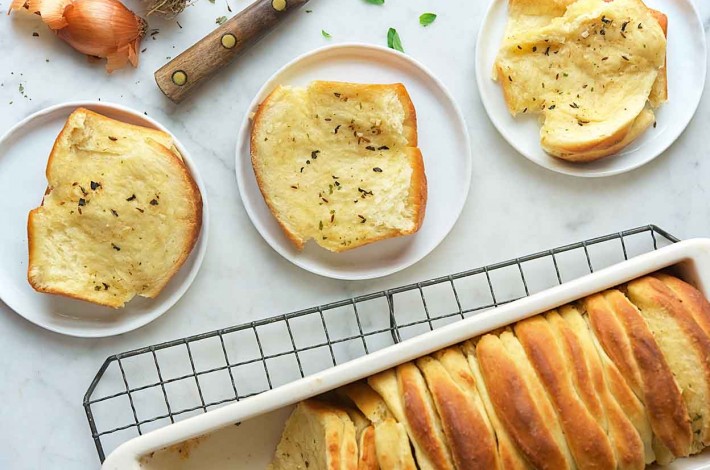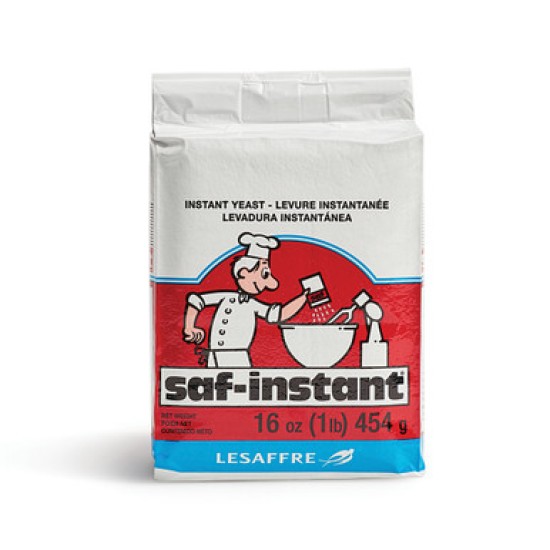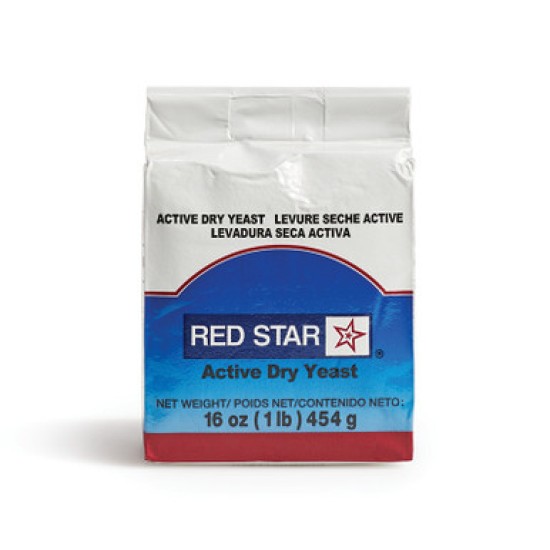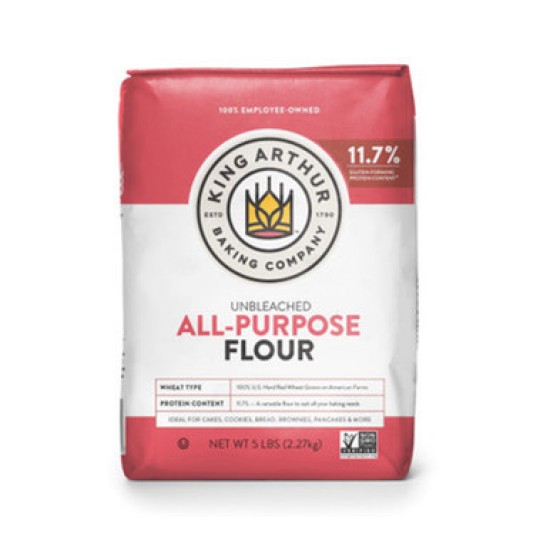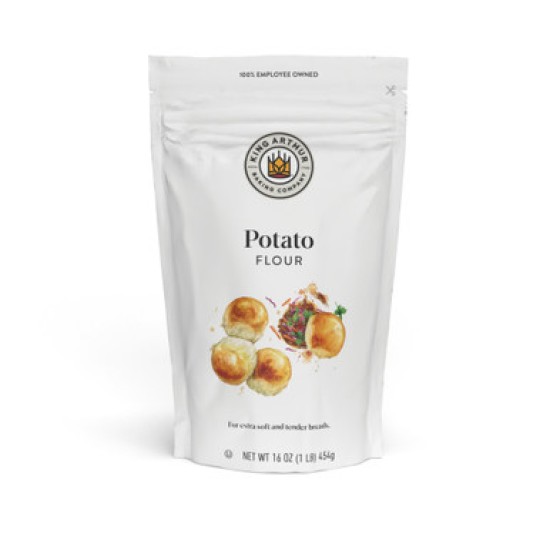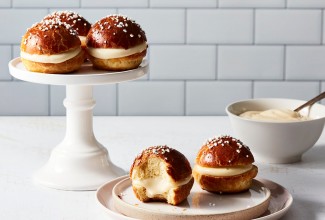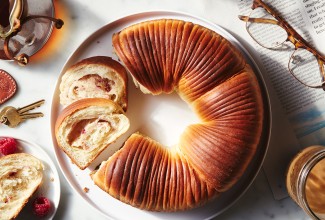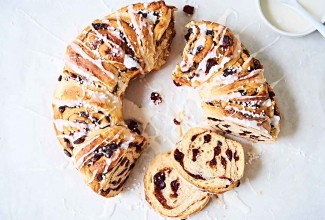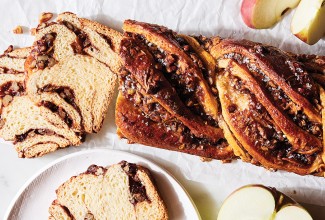-
To make the dough: Combine the milk, butter, sugar, and salt in a microwave-safe measuring cup or bowl; or in a saucepan. Heat, stirring, until the butter melts. Let the mixture cool to lukewarm.
-
While the mixture cools, weigh 4 cups (480g) of flour; or measure it by gently spooning it into a cup, then sweeping off any excess.
-
Transfer the cooled milk mixture to a mixing bowl, and add the eggs, yeast, flour, and potato flour and mix to form a shaggy dough. Knead the dough — using your hands, a stand mixer, or your bread machine set on the dough cycle — until it's smooth. The dough will remain somewhat sticky, but should definitely form a ball. During the summer, or in a warm/humid climate, you'll probably find you have to add the remaining 1/4 cup (30g) flour.
-
Place the dough in a greased container, cover, and let it rise for about 90 minutes, until it's puffy though not necessarily doubled in bulk.
-
To make the filling: While the dough is rising, place the filling ingredients in a bowl and mix to combine.
-
After the dough has risen, deflate it and divide it in half. Working with one piece at a time, place the dough on a lightly greased or lightly floured surface (your preference), and roll/pat it into a 12" circle about 1/4" thick. Cut 3 1/2" to 4" circles with a cutter, large canning jar lid, or English muffin ring; you should have about 10 circles.
-
Spread the butter-herb filling on half of each circle, fold in half, and place fold-side down in a lightly greased 8 1/2" x 4 1/2" loaf pan. Repeat with the remaining half of the dough, filling another 8 1/2" x 4 1/2" bread pan. Or place all of the circles in a 12" x 4" x 2 1/2" tea loaf pan. Shape any scraps into small rolls; or butter them, and pile them into the wells of a muffin tin. They won't look pretty, but they'll taste just fine.
-
Cover the pan(s) with greased plastic and let the dough rise for about 90 minutes, until it's puffy and starting to fill the pan. Towards the end of the rising time, preheat the oven to 350°F.
-
Uncover the loaves and bake them for 25 to 30 minutes. Bread baked in a ceramic pan will take 5 to 7 minutes longer to bake than in a metal one. Tent the loaves with foil if they look like they're browning too quickly.
-
Remove the bread from the oven; brush it with additional melted butter, if desired. Turn the loaves out of the pan, and serve warm.
-
Store any leftovers, well wrapped, at room temperature for several days; freeze for longer storage.
